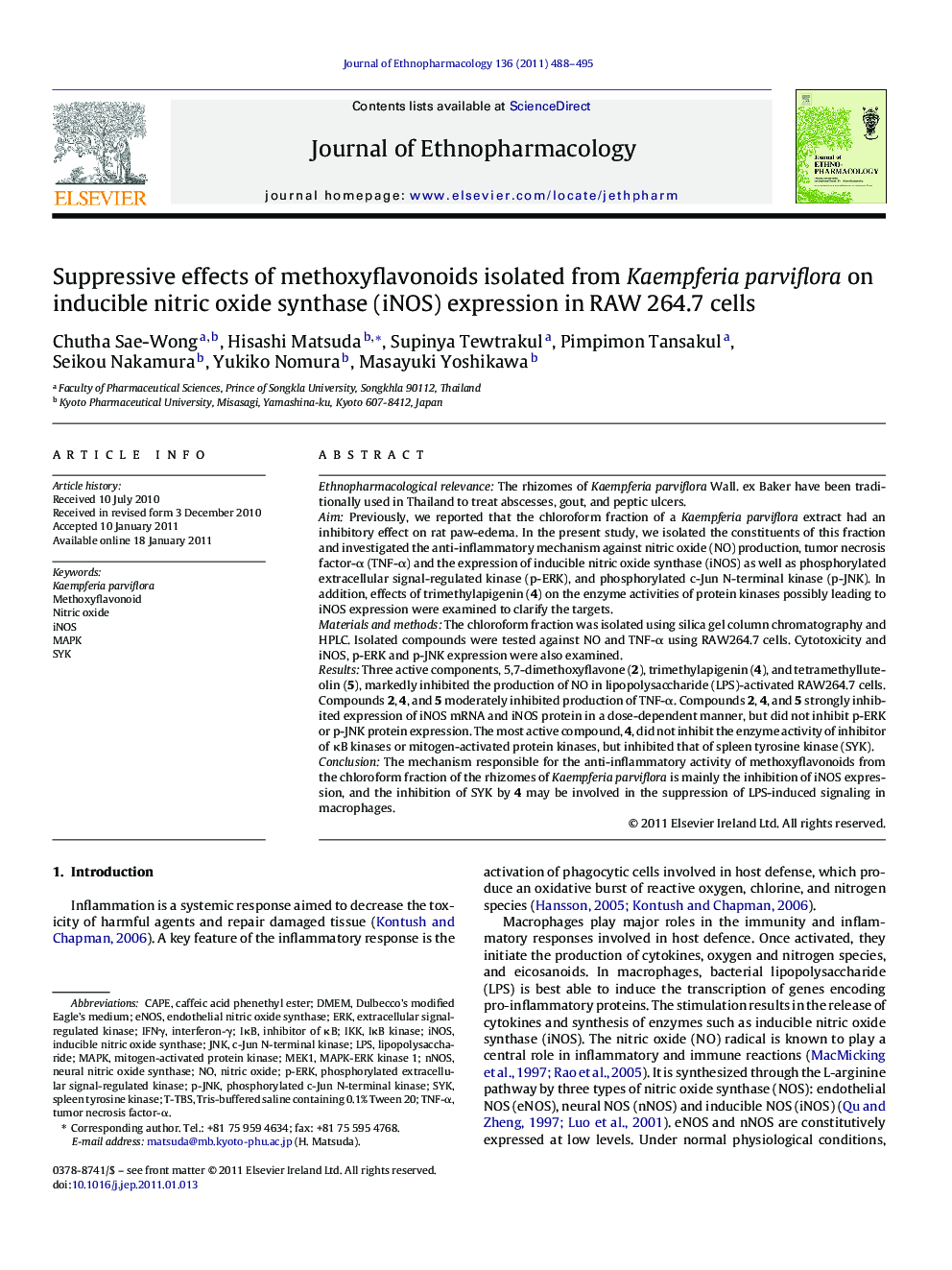| کد مقاله | کد نشریه | سال انتشار | مقاله انگلیسی | نسخه تمام متن |
|---|---|---|---|---|
| 2545841 | 1124006 | 2011 | 8 صفحه PDF | دانلود رایگان |

Ethnopharmacological relevanceThe rhizomes of Kaempferia parviflora Wall. ex Baker have been traditionally used in Thailand to treat abscesses, gout, and peptic ulcers.AimPreviously, we reported that the chloroform fraction of a Kaempferia parviflora extract had an inhibitory effect on rat paw-edema. In the present study, we isolated the constituents of this fraction and investigated the anti-inflammatory mechanism against nitric oxide (NO) production, tumor necrosis factor-α (TNF-α) and the expression of inducible nitric oxide synthase (iNOS) as well as phosphorylated extracellular signal-regulated kinase (p-ERK), and phosphorylated c-Jun N-terminal kinase (p-JNK). In addition, effects of trimethylapigenin (4) on the enzyme activities of protein kinases possibly leading to iNOS expression were examined to clarify the targets.Materials and methodsThe chloroform fraction was isolated using silica gel column chromatography and HPLC. Isolated compounds were tested against NO and TNF-α using RAW264.7 cells. Cytotoxicity and iNOS, p-ERK and p-JNK expression were also examined.ResultsThree active components, 5,7-dimethoxyflavone (2), trimethylapigenin (4), and tetramethylluteolin (5), markedly inhibited the production of NO in lipopolysaccharide (LPS)-activated RAW264.7 cells. Compounds 2, 4, and 5 moderately inhibited production of TNF-α. Compounds 2, 4, and 5 strongly inhibited expression of iNOS mRNA and iNOS protein in a dose-dependent manner, but did not inhibit p-ERK or p-JNK protein expression. The most active compound, 4, did not inhibit the enzyme activity of inhibitor of κB kinases or mitogen-activated protein kinases, but inhibited that of spleen tyrosine kinase (SYK).ConclusionThe mechanism responsible for the anti-inflammatory activity of methoxyflavonoids from the chloroform fraction of the rhizomes of Kaempferia parviflora is mainly the inhibition of iNOS expression, and the inhibition of SYK by 4 may be involved in the suppression of LPS-induced signaling in macrophages.
Through bioassay-guided isolation, 5,7-dimethoxyflavone, trimethylapigenin, and tetramethylluteolin were isolated from the rhizomes of Kaempferia parviflora as inhibitors of NO production in LPS-activated RAW264.7 cells. These compounds inhibited mRNA and protein levels of iNOS in a dose-dependent manner.Figure optionsDownload as PowerPoint slide
Journal: Journal of Ethnopharmacology - Volume 136, Issue 3, 14 July 2011, Pages 488–495